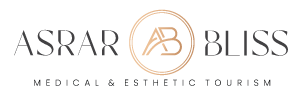What is a nose filler?
A nasal filler is a non-surgical rhinoplasty sometimes referred to as a liquid rhinoplasty. It is suitable for everyone who does not want to go through the surgical disorders perfectly.
Nose surgeries come in two types and a few different names let us tell you the difference between them all.
There is the non-surgical nose job that is performed to fix minor problems like the tip of the nose, upper lip and minor problems of the nose.
On the other hand, there is rhinoplasty surgery, where the plastic surgeon treats major nose problems such as breathing problems, bone and cartilage problems.
Beard and mustache transplantation is a non-surgical procedure in which hair follicles are transferred from the donor area, the back of the head, to the recipient area; the chin and mustache areas to be treated.


For this non-surgical rhinoplasty, they are also referred to as:
- Liquid Rhinoplasty.
- Non-surgical rhinoplasty.
- Permanent nasal filler.
- Nasal injection filler.
- Nose aesthetics.
- For this surgical rhinoplasty, they are also referred to as:
- Nose surgery.
- Rhinoplasty improves nose aesthetics.
- Nose plastic.
- Aesthetic nose surgery.
Non-surgical rhinoplasty is a medical treatment aimed at reshaping the nose with a dermal filler.
The dermal filler is used in non-surgical rhinoplasty. It contains a gel that is usually made up of hyaluronic acid, which is naturally produced by the human body. It is found in almost every part of the human body, especially the eyes, joints and skin.
However, non-surgical rhinoplasty has limitations compared to surgical rhinoplasty. It has a temporal effect lasting up to a year, in some cases a year and a half, and it cannot, for example, change the size of the nose to make it smaller. It just smooths out the bumps and modifies certain properties.
The Candidates For Nasal Fillers
Non-surgical rhinoplasty, also known as nasal filler, is a perfect fit for you if you want to make minor changes or modifications, such as:
Enhance the tip of the nose and straighten a crooked nose.
Add volume to your nose to balance overall facial proportions.
Smooth out a lump or bump on your nose, or camouflage a lump on the bridge of your nose.
The nasal filler may not be suitable for people who want dramatic changes in nose shape and a permanent result. Traditional rhinoplasty surgery is an ideal option for these people.


Why Should You Choose Nose Filler Injections?
Nose filler is a reshaping nasal treatment that can be performed easily and without the need for surgical intervention.
Despite temporary filler injections, they last a long time and can be maintained even longer. There are certain things the patient can do to get a longer effect, such as:
Avoid drying out: fillers are water sensitive. So if they dry out, they wear out faster. So keep drinking plenty of water.
Keep an eye on nasal pressure: Check everyday nasal pressures like glasses, masks and sleeping position.
Avoid some facial expressions: Avoid certain facial expressions that accompany, for example, laughing or staring as much as possible. The more the nose is integrated into the facial expression, the sooner the filler wears out. Get Top-Up Injections: Those willing to experience a longer effect can ask their doctor to get top-up fillers. Nasal filler is a reversible treatment, that’s why many people prefer it.
How Is Nose Filler Made?
Non-surgical rhinoplasty, also known as nasal filler, is a perfect fit for you if you want to make minor changes or modifications, such as:
Enhance the tip of the nose and straighten a crooked nose.
Add volume to your nose to balance overall facial proportions.
Smooth out a lump or bump on your nose, or camouflage a lump on the bridge of your nose.
The nasal filler may not be suitable for people who want dramatic changes in nose shape and a permanent result. Traditional rhinoplasty surgery is an ideal option for these people.

Any medications the patient is currently taking. B. blood-thinning medication, can interfere with the healing process or cause bleeding or bruising. The desired shape that the patient is looking for Some shapes may not be achievable in a non-surgical nose procedure. Counseling is important to help the doctor decide if filler injections are the best choice. After the consultation, the doctor will advise the patient to avoid certain things, such as taking blood-thinning medications, such as aspirin, for at least a week. Avoid alcohol consumption for at least 2–5 days. These precautions will help achieve better results and avoid bruising or bleeding.
On the day of the nasal filler injections
- It is advisable to get enough sleep the night before and to eat before the injection.
- Don’t overeat, however, as dermal fillers can sometimes cause nausea. The doctor will clean the face to make sure no oil or lotion is left behind.
- The treated area is given a local anesthetic. Then the doctor marks the areas to be injected.
- Finally, the doctor injects the marked areas with dermal fillers.
- After the nasal filler injection procedure,
- There is no recovery time for the nasal filler and the patient can continue their daily activities for so long
- as these do not involve sun exposure or excessive exercise.
- The patient can use ice on the injection site to cool it down; This helps reduce bruising and redness.
- There are certain things to avoid after the injection;
- Avoid drinking alcohol for 24 hours after the injection.
- Avoid consuming too much salt for 24 hours after the injection.
- Avoid exercising for 24 hours after the injection.
- Avoid any pressure around the treated area, wear something around it, such as sunglasses or glasses, and rub and touch it for a few days.
- Avoid dental work for at least two weeks.
- Avoid wearing makeup for 12 hours.
- Avoid lasers or facial treatments.
- Avoid going into a hot bath, sauna, Turkish bath, or direct sunlight.
- Possible side effects of nasal fillers
- The most common side effects of nasal fillers are bruising, redness, and swelling. These usually go away within days after the procedure, especially if excessive exercise is avoided.
- The patient may also experience numbness in this area or a feeling that their nose is bigger due to the swelling, which will also subside in a few days. However, some patients may experience longer-lasting symptoms of infection, such as fever, pain, or chills. In this case, medical attention is required. You should contact the doctor immediately.






